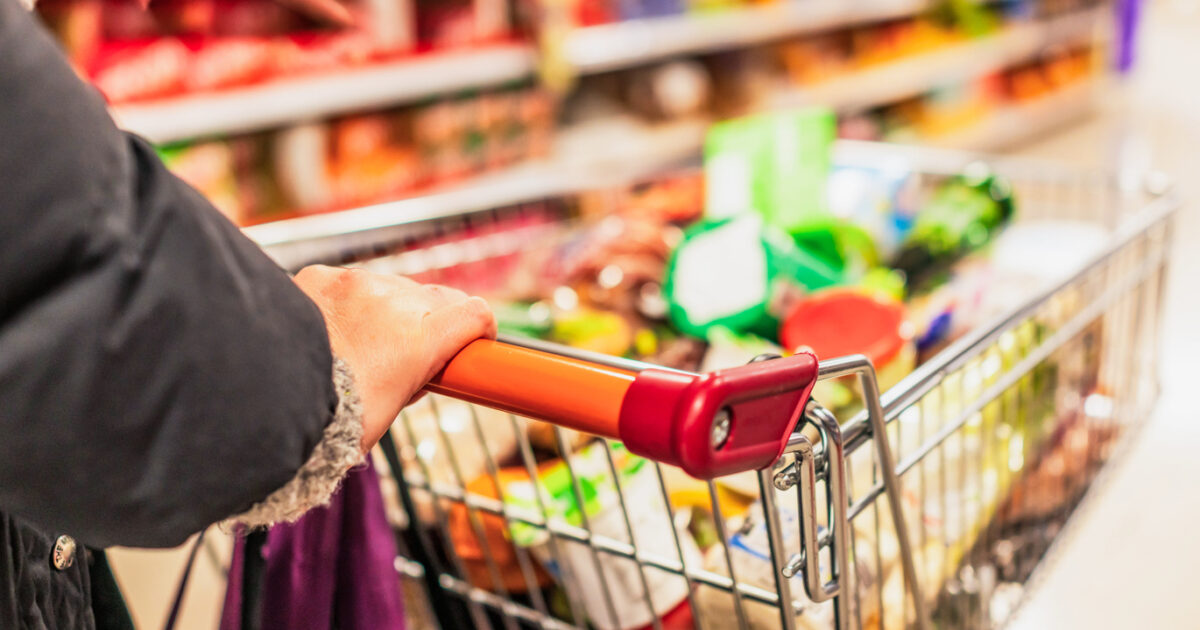Lower are the prices of the typical household basket in Greek supermarket Compared to France, England, Italy, Spain, Portugal, Germany, Romania.
This conclusion comes from a repetitive survey by the Consumer Retail Research Institute (IELKA), which has examined prices that sell basic products in supermarkets in our country and elsewhere.
The research is based on elements of price comparison platforms in each country, but also on supermarket pricing) in a typical product basket of the organized food retailers (supermarket) in Greece in April 2025 and respectively in France, the United Kingdom, the United Kingdom, the United Kingdom, the United Kingdom, the United Kingdom. It is noted that price comparisons are made with and without the value of VAT, which differs in each country.
Prices were compared to this analysis in a total of 40 product categories. These subcategories of product are examined by a significant sample of over 6,000 product prices and 44 different supermarket chains in eight countries in total to calculate average prices, with sampling from valid price comparison sites in Greece and abroad, as well as supermarket chains. The data include final prices of both branded products and private label products in each country.
It is clarified that prices are only supermarket chains and not other points of sale.
Comparison of average basket prices shows that other countries have a significantly more expensive average basket than Greece, Germany 46%, 26% of France, 24% in the United Kingdom, 15% Italy, while Portugal, 9%, Spain and 9% Romania.
According to IELKA, the image of the results changes significantly when we remove the corresponding VAT per country to understand the actual prices of supermarket products. Comparison of baskets in this case shows that the seven countries have a more expensive average basket than Greece, Germany by 54%, France by 33%, the United Kingdom by 33%, Italy by 23%, Spain by 18%Portugal by 10%and Romania by 14%. This is the result of the difference between the low VAT per country (this is the VAT mentioned in food and drinks). In Greece this VAT is 13%. VAT is significantly higher than the United Kingdom (0%or 5%) and France (10%and 5.5%), Spain (10%and 4%), Portugal (13%and 6%), Italy (5%and 4%), Germany (7%) and Romania (9%), and most of the EU countries. VAT with 24%in the other countries are subject to the low VAT rate, which is lower than Greek with 6%, 5.5%, 4%or even 0%. Few products are found in low VAT in Greece and high in other countries (eg baby wipes) It is noted that the impact of special taxes (eg coffee) cannot be taken into account in the above data.
The general conclusion of the above analysis is that organized Greek food retail (supermarket) provides Greek consumers access to products for its typical average basket at lower prices that are the result of organized efforts by suppliers and retailers. This trend with slight fluctuations has been timeless over the last 12 years of this research by IELKA. Timeless price comparison with overseas shows that in recent years Greece has constantly has the typical basket cheaper than comparable countries with some fluctuations that do not change the general conclusion of analysis.
It is noted that factors that should be taken into account when comparing prices between different countries are:
- The height of VAT rates in each country
- Special Taxes in each country
- The amount of taxation in each country
- The agricultural and industrial production in every country
- Consumer habits in each country (eg the tendency for packaged or non -packaged products, private label products etc)
- Weather conditions and natural disasters due to climate change
- The cost of energy
- The cost of fuel and general transport
- The wage-labor costs
- The country’s distance from Central Europe’s productive centers and the corresponding costs
- The complexity of each country’s geography (eg road network, islands etc)
- Market size, purchasing power-power and corresponding scale economies in product supplies
- The ratio between organized retail and small specialized points of sale
- The export-installation balance in relation to their food and their raw materials
- The various production costs (energy, raw materials, wage costs, financial costs, bureaucracy)
- The productivity of industry and retailing in every country
- The seasonality of demand and supply (eg due to tourism or weather conditions).
